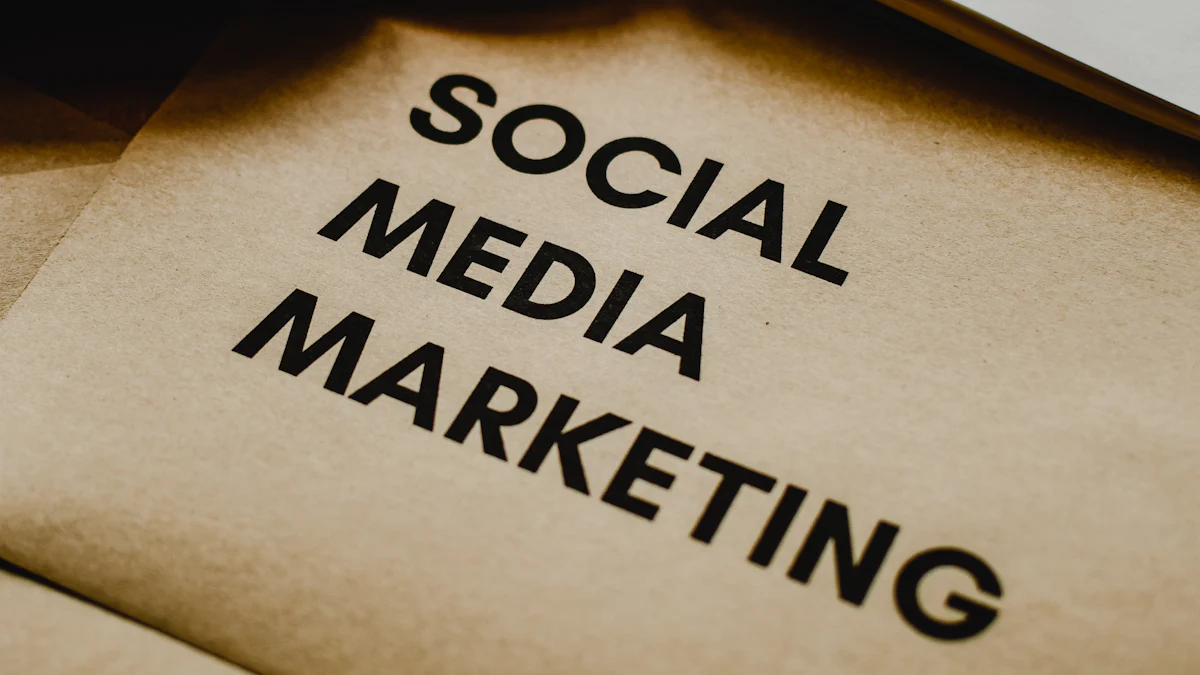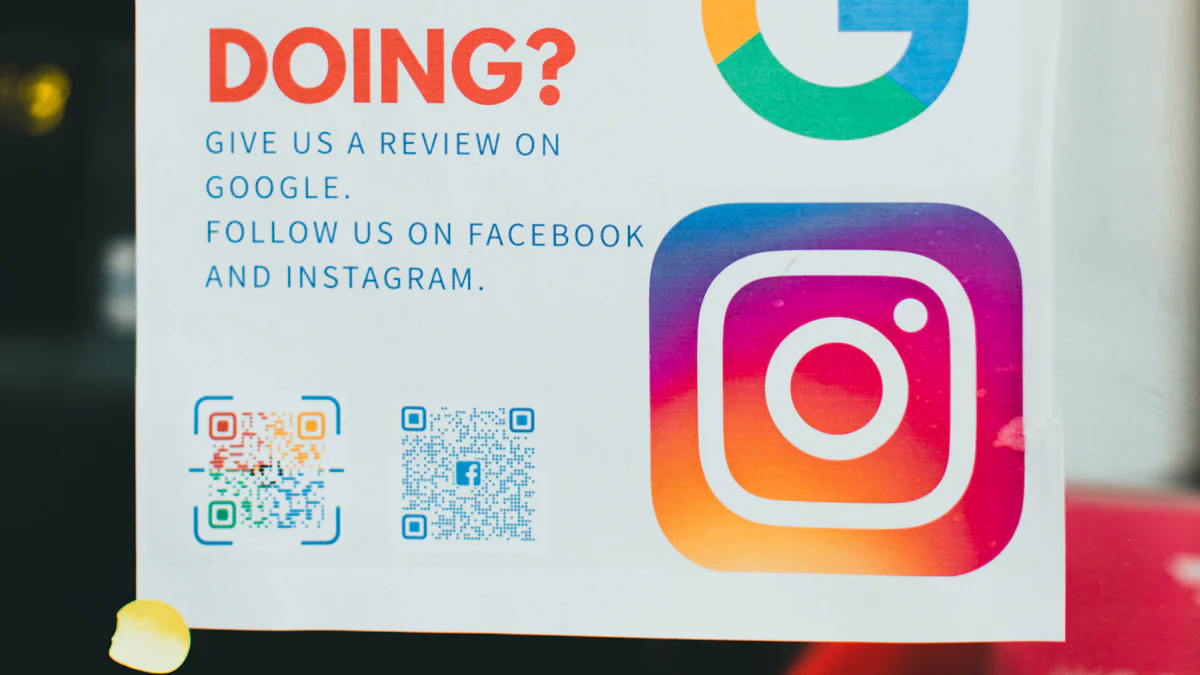Step-by-Step Guide to Setting Up Instagram Whitelisting

Instagram whitelisting allows a brand to promote a creator’s content as ads, bridging the gap between organic and paid strategies. This whitelisting process enhances authenticity by leveraging the creator’s voice, making ads feel more relatable to their audience. It also boosts visibility, enabling brands to reach broader and more targeted audiences. By using this approach, you can optimize ad performance, achieve higher engagement rates, and build trust with potential customers. Whitelisting Instagram content ensures that your campaigns resonate better, creating a win-win situation for both creators and brands.
What Are the Benefits of Instagram Whitelisting?
Instagram whitelisting offers a powerful way to amplify your marketing efforts by combining the authenticity of influencer content with the precision of paid advertising. By leveraging this strategy, you can unlock several key benefits that enhance your campaigns and drive better results.
Enhanced Ad Performance
Whitelisting allows you to optimize influencer content for paid promotions. Unlike organic posts, which rely on algorithms and follower engagement, whitelisted content gives you control over who sees the ads. You can tweak the original post to create variations that perform better. For example, adjusting captions or visuals can make the content more appealing to your target audience. This flexibility ensures that your ads resonate with viewers, leading to higher click-through rates and conversions. Additionally, running ads through the influencer’s account adds credibility, making the content feel more authentic and relatable.
Increased Credibility and Trust
When you run ads through an influencer’s account, the content appears under their handle, not your brand’s. This approach builds trust because audiences already view the influencer as a credible source. Instead of feeling like traditional social media ads, these promotions feel like genuine recommendations. This trust factor can significantly impact purchasing decisions, especially when the influencer’s followers align with your target audience. By using influencer whitelisting, you strengthen your brand’s reputation while maintaining the creator’s unique voice.
Better Audience Targeting
Instagram whitelisting enables you to reach highly specific audiences. Through tools like lookalike audiences, you can target users who share similar traits with the influencer’s followers. This strategy expands your brand exposure to people who are more likely to engage with your content. Moreover, you can use advanced targeting options to refine your audience based on demographics, interests, and behaviors. This precision ensures that your ads reach the right people at the right time, maximizing your return on investment.
Streamlined Collaboration Between Brands and Creators
Instagram whitelisting simplifies the way brands and creators work together, making partnerships more efficient and productive. By granting brands access to promote content directly from a creator’s account, this process eliminates many of the hurdles that often arise in traditional collaborations.
One of the key advantages is the ability to maintain the creator’s authentic voice while leveraging the brand’s advertising resources. When you whitelist content, you allow the creator’s unique style and tone to remain intact. This ensures that the audience continues to see content that feels genuine, even when it’s being used as part of a paid campaign.
Whitelisting also reduces the need for constant back-and-forth communication. Instead of requiring creators to manually post ads or share files, brands can directly manage the promotion of the content. This streamlined approach saves time for both parties and minimizes the risk of errors, such as incorrect captions or posting at the wrong time.
“Whitelisting allows brands to optimize influencer content to get the best results,” making it easier to tweak and test ad variations without disrupting the creator’s original post. For example, you can adjust targeting parameters, captions, or visuals to better align with your campaign goals. This flexibility ensures that both the brand and the creator benefit from improved performance metrics.
Additionally, whitelisting fosters a stronger sense of trust and collaboration. By sharing access through tools like Meta Business Suite, both parties gain transparency into how the content is being used. Creators can feel confident that their work is being represented accurately, while brands can ensure that campaigns align with their objectives.
Prerequisites for Setting Up Instagram Whitelisting
Before diving into the whitelisting process, you need to ensure that both you and your collaborators meet the essential requirements. These prerequisites help streamline the setup and ensure a smooth experience for both creators and brands.
For Creators
As a creator, you play a pivotal role in enabling instagram whitelisting. Meeting these requirements ensures that brands can effectively promote your content while maintaining transparency and control.
A Professional Instagram Account (Creator or Business Account)
To begin, you must convert your personal Instagram account into either a Creator or Business account. This step unlocks advanced features, such as insights and ad permissions, which are crucial for whitelisted content. A professional account also signals to brands that you are ready for collaborations.
Facebook Business Manager Access
You need access to Meta Business Manager to grant whitelisting access to brands. This tool allows you to manage permissions, assign assets, and oversee how your content is being used. Without this access, you cannot enable the brand to run ads through your account.
Willingness to Grant Ad Permissions to Brands
Granting ad permissions is a key part of influencer whitelisting. You must be comfortable sharing limited access to your account with the brand. This includes allowing them to boost your posts or create new ads using your handle. Transparency and trust are essential here, as you retain control over what permissions you grant.
For Brands
As a brand, ensuring you meet the requirements for running creator ads is equally important. These steps prepare you to collaborate effectively with creators and maximize the impact of your campaigns.
A Facebook Business Manager Account
You must have a Meta Business Manager account to request whitelisting access from creators. This platform serves as the central hub for managing ad campaigns, permissions, and audience targeting. Without it, you cannot initiate the whitelisting process.
A Clear Collaboration Agreement with the Creator
Establishing a clear agreement with the creator is vital. This agreement should outline the scope of the partnership, including the type of content to be promoted, the duration of the campaign, and the permissions required. A well-defined agreement builds trust and ensures both parties are aligned.
Defined Campaign Goals and Target Audience
Before requesting whitelisting access, you need to define your campaign goals and target audience. Whether you aim to increase brand exposure, drive sales, or boost engagement, having clear objectives helps you make the most of creator content. Additionally, understanding your audience ensures that your ads resonate with the right people.
By meeting these prerequisites, both creators and brands set the stage for a successful instagram whitelisting collaboration. These steps not only simplify the process but also foster trust and transparency, ensuring that campaigns deliver maximum impact.
How to Set Up Whitelisting on Instagram

Setting up Instagram whitelisting requires collaboration between the creator and the brand. Both parties must follow specific steps to ensure a seamless process. Below is a detailed guide on how to set up whitelisting for both creators and brands.
Steps for Creators
As a creator, you play a crucial role in enabling influencer whitelisting. Follow these steps to grant the necessary permissions and prepare your account for collaboration.
Convert Your Instagram Account to a Creator or Business Account
Start by switching your personal Instagram account to a Creator or Business account. This step unlocks essential features like insights and ad permissions, which are necessary for whitelisting. Navigate to your account settings, select "Account," and choose the option to switch to a professional account. Select either "Creator" or "Business" based on your needs.
Link Your Instagram Account to a Facebook Business Manager Account
To enable whitelisting, connect your Instagram account to Meta Business Manager. Log in to your Meta Business Manager account, go to "Business Settings," and add your Instagram account under the "Accounts" section. This connection allows you to manage permissions and assets effectively.
Request a Brand Partnership Through Your Instagram Account
Initiate the partnership by requesting collaboration with the brand. Use Instagram’s branded content tools to send a partnership request. This step signals your willingness to collaborate and sets the foundation for granting permissions.
Add the Brand as a Partner in Meta Business Suite Using Their Business Manager ID
Access Meta Business Suite and add the brand as a partner. Enter their Business Manager ID to establish the connection. This ID is provided by the brand and ensures that both parties are linked within the platform.
Assign Assets and Permissions, Ensuring the Correct Facebook Page Is Selected
Once the brand is added, assign the necessary assets and permissions. Select the correct Facebook Page associated with your Instagram account. Grant permissions that allow the brand to promote your content as Instagram ads while maintaining control over your account.
Save Changes to Finalize the Permissions for Whitelisting
After assigning permissions, save your changes to complete the setup. This step ensures that the brand can access your content for whitelisting purposes. Double-check the permissions to confirm accuracy before finalizing.
Steps for Brands
As a brand, your role involves managing the technical aspects of whitelisting and ensuring smooth collaboration with the creator. Follow these steps to get started.
Share Your Meta Business Manager ID With the Creator
Provide your Meta Business Manager ID to the creator. This ID allows them to add you as a partner in their Meta Business Suite. Sharing this information is the first step in establishing a connection.
Approve the Partnership Request From the Creator
Once the creator sends a partnership request, approve it through your Meta Business Manager account. Navigate to "Requests" in the "Business Settings" section and accept the request. This approval formalizes the partnership.
Request Access to the Creator’s Account in Facebook Business Manager
After approving the partnership, request access to the creator’s account. Go to "Business Settings," select "Partners," and request the necessary permissions. Ensure that you specify the assets and actions required for running Instagram ads.
Set Up the Ad Campaign Using the Creator’s Content
With permissions granted, create your ad campaign using the creator content. Use Meta Ads Manager to design and launch the campaign. Leverage the creator’s authentic voice to make the ads more relatable and engaging for the target audience.
Monitor and Optimize the Campaign Performance
Track the performance of your Instagram ads regularly. Use insights from Meta Business Manager to analyze metrics like engagement, reach, and conversions. Optimize the campaign by adjusting targeting, visuals, or captions to achieve better results.
By following these steps, both creators and brands can successfully set up Instagram whitelisting. This process not only simplifies collaboration but also enhances the effectiveness of influencer whitelisting campaigns.
Best Practices for Optimizing Instagram Whitelisting Campaigns

To make the most of your instagram whitelisting efforts, you need to focus on strategies that maximize performance and ensure your campaigns deliver results. Below are actionable best practices to help you optimize your whitelisting campaigns effectively.
Define Clear Campaign Goals
Start by identifying what you want to achieve with your whitelisting campaigns. Clear goals provide direction and help you measure success. Whether you aim to boost brand awareness, drive website traffic, or increase sales, defining these objectives ensures your efforts align with your overall marketing strategy.
For example, if your goal is to enhance brand visibility, focus on metrics like reach and impressions. If conversions are your priority, track click-through rates and purchases. Setting specific, measurable goals allows you to evaluate the impact of your creator content and adjust your approach as needed.
Pro Tip: Collaborate with the creator to ensure their content aligns with your campaign objectives. Their unique voice can amplify your message while maintaining authenticity.
Leverage Advanced Audience Targeting
One of the biggest advantages of instagram whitelisting is the ability to use advanced ad targeting tools. Through meta business manager, you can refine your audience based on demographics, interests, and behaviors. This precision ensures your ads reach users who are most likely to engage with your content.
Take advantage of features like lookalike audiences to expand your reach. These audiences mirror the characteristics of the creator’s followers, helping you connect with people who share similar interests. By targeting the right audience, you increase the chances of achieving higher engagement and conversions.
Quick Tip: Test different audience segments to identify which group responds best to your whitelisting campaigns. Use these insights to fine-tune your targeting strategy.
Monitor Performance Metrics Regularly
Tracking the performance of your whitelisting campaigns is essential for continuous improvement. Use the analytics tools in meta business manager to monitor key metrics such as engagement, reach, and conversion rates. Regular analysis helps you identify what’s working and what needs adjustment.
For instance, if a particular piece of creator content generates high engagement, consider allocating more budget to promote it further. Conversely, if an ad underperforms, analyze the factors contributing to its low performance. Adjust elements like visuals, captions, or targeting to improve results.
Remember: Monitoring metrics isn’t just about numbers. It’s about understanding how your audience interacts with your ads and using that knowledge to refine your strategy.
By following these best practices, you can unlock the full potential of influencer whitelisting. Defining clear goals, leveraging advanced targeting, and monitoring performance will help you create impactful campaigns that resonate with your audience and drive meaningful results.
Maintain Transparent Communication with Creators
Maintaining open and transparent communication with creators is essential for a successful Instagram whitelisting campaign. Clear communication fosters trust, ensures alignment, and minimizes misunderstandings during the collaboration process.
Set Expectations Early
Start by discussing the goals and scope of the campaign with the creator. Share your objectives, target audience, and desired outcomes. This clarity helps the creator understand your vision and tailor their content accordingly. Be specific about deliverables, timelines, and any creative guidelines you expect them to follow.
Tip: Use a written agreement to outline key details, such as permissions, campaign duration, and payment terms. This document serves as a reference point and reduces the chances of confusion later.
Provide Regular Updates
Keep the creator informed throughout the campaign. Share updates on ad performance, audience engagement, and any adjustments you plan to make. This transparency allows the creator to feel involved and valued in the process. For example, if you notice a particular ad variation performing well, let the creator know and discuss ways to replicate its success.
Encourage Feedback
Invite the creator to share their insights and suggestions. They know their audience best and can provide valuable input on what resonates with their followers. By incorporating their feedback, you can create ads that feel authentic and relatable. This collaborative approach strengthens the partnership and improves campaign results.
Use Tools for Seamless Collaboration
Leverage tools like Meta Business Suite to streamline communication and manage permissions. These platforms allow both parties to track campaign progress and ensure that content aligns with the agreed-upon strategy. Using such tools also reduces the need for constant back-and-forth, saving time for everyone involved.
Pro Tip: Schedule regular check-ins to discuss campaign performance and address any concerns. Consistent communication builds a stronger working relationship and ensures both parties stay on the same page.
Respect Creative Boundaries
While it’s important to provide guidance, avoid micromanaging the creator’s work. Trust their expertise and allow them to maintain their unique voice. Overly restrictive instructions can stifle creativity and make the content feel forced. Instead, focus on collaboration and mutual respect to achieve the best results.
By prioritizing transparent communication, you create a foundation for a productive and rewarding partnership. This approach not only enhances the effectiveness of your Instagram whitelisting campaigns but also fosters long-term relationships with creators who align with your brand values.
Instagram whitelisting offers a powerful way to elevate your advertising strategy. By combining the authenticity of creator content with advanced targeting tools, you can enhance ad performance and build trust with your audience. Following the step-by-step guide ensures a seamless setup process, empowering both brands and creators to collaborate effectively. To maximize results, focus on defining clear goals, leveraging precise audience targeting, and monitoring campaign metrics regularly. When done right, whitelisting Instagram content creates a win-win scenario, fostering stronger partnerships and delivering impactful campaigns that resonate with your audience.
FAQ
What is Instagram whitelisting?
Instagram whitelisting is a process where creators grant brands permission to promote their content as ads. This allows brands to use the creator’s handle and content for targeted advertising campaigns. By leveraging the creator’s authentic voice, brands can enhance ad performance and build trust with their audience.
Why should I consider using Instagram whitelisting?
Whitelisting offers several benefits. It improves ad performance by combining the authenticity of creator content with advanced targeting tools. It also builds credibility since the ads appear under the creator’s handle, making them feel more genuine. Additionally, it simplifies collaboration between brands and creators, creating a win-win scenario for both parties.
How does Instagram whitelisting differ from traditional influencer marketing?
Traditional influencer marketing relies on creators posting content organically on their profiles. With whitelisting, brands gain access to promote the creator’s content as paid ads. This approach provides more control over targeting, reach, and campaign optimization while still maintaining the creator’s unique voice.
What permissions do creators need to grant for whitelisting?
Creators need to grant limited permissions through Meta Business Suite. These permissions allow brands to boost posts or create ads using the creator’s handle. Creators retain control over what permissions they grant, ensuring transparency and trust throughout the process.
Do I need a Facebook Business Manager account to set up whitelisting?
Yes, both creators and brands need access to Facebook Business Manager. This platform serves as the central hub for managing permissions, assigning assets, and running ad campaigns. Without it, the whitelisting process cannot be completed.
How does whitelisting improve audience targeting?
Whitelisting enables brands to use advanced targeting tools available in Meta Business Manager. Brands can refine their audience based on demographics, interests, and behaviors. They can also create lookalike audiences to reach users similar to the creator’s followers, maximizing the campaign’s impact.
Can creators see how their content is being used in whitelisting campaigns?
Yes, creators can track how their content is being used through Meta Business Suite. This transparency fosters trust and ensures that both parties remain aligned. Creators can also provide feedback to brands to improve campaign performance.
What are the risks of Instagram whitelisting, and how can I avoid them?
The main risks include miscommunication and misuse of permissions. To avoid these issues, establish clear agreements outlining the scope of the partnership, permissions required, and campaign goals. Transparent communication between brands and creators minimizes conflicts and ensures a smooth collaboration.
How can I measure the success of a whitelisting campaign?
Use analytics tools in Meta Business Manager to track key metrics like engagement, reach, and conversions. Regularly monitor performance to identify what works and make adjustments as needed. Collaborating with the creator to analyze results can also provide valuable insights for future campaigns.
Is Instagram whitelisting suitable for small businesses?
Yes, small businesses can benefit from whitelisting. It allows them to leverage the credibility of creators to reach a broader audience. By using advanced targeting tools, small businesses can maximize their return on investment and achieve their marketing goals effectively.
See Also
Essential Steps for Effective Influencer Whitelisting
Strategies for Successful Social Media Whitelisting
Expert Techniques for Social Media Whitelisting
